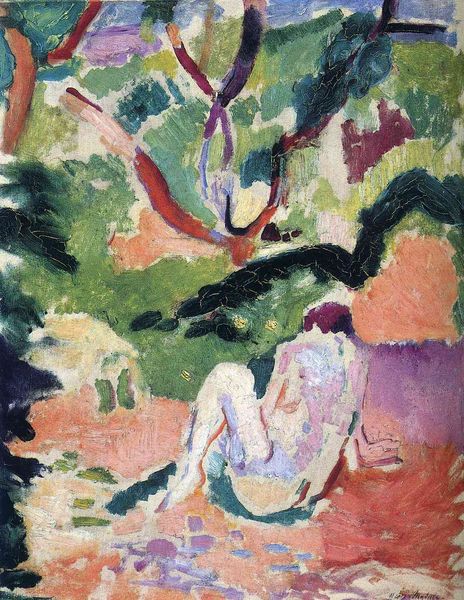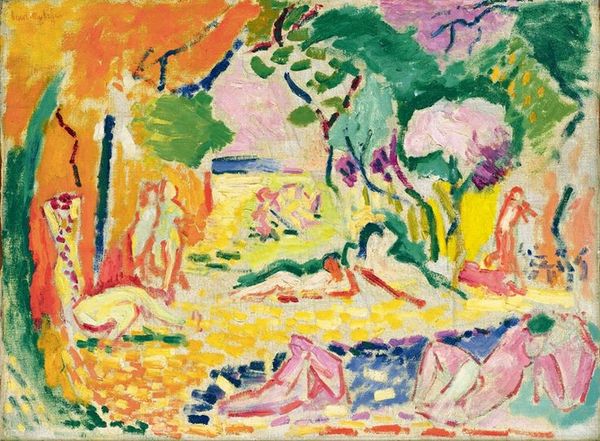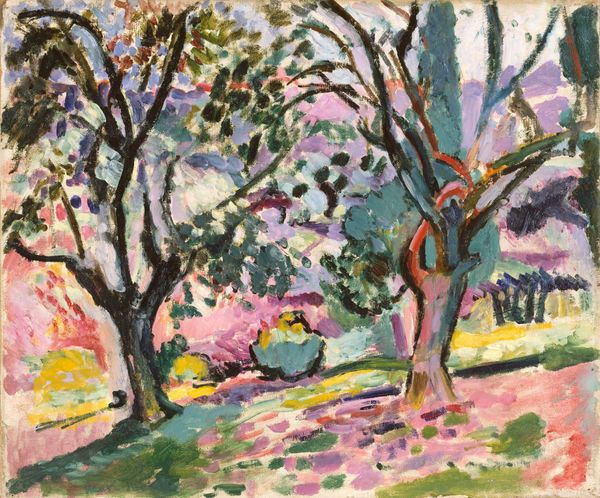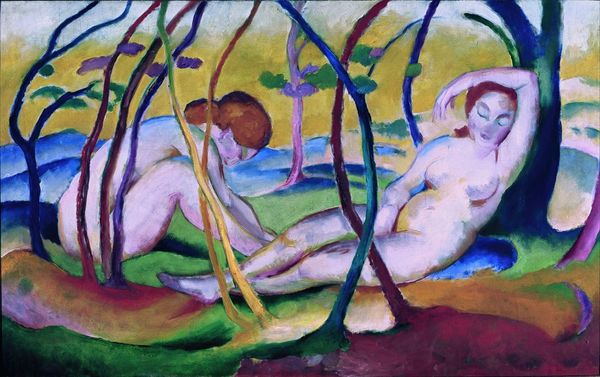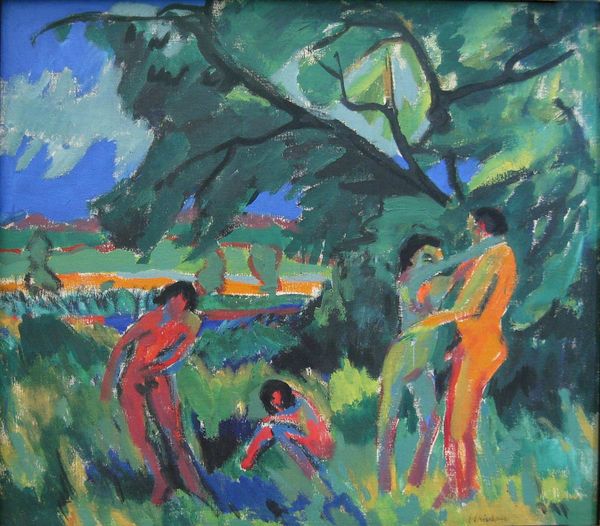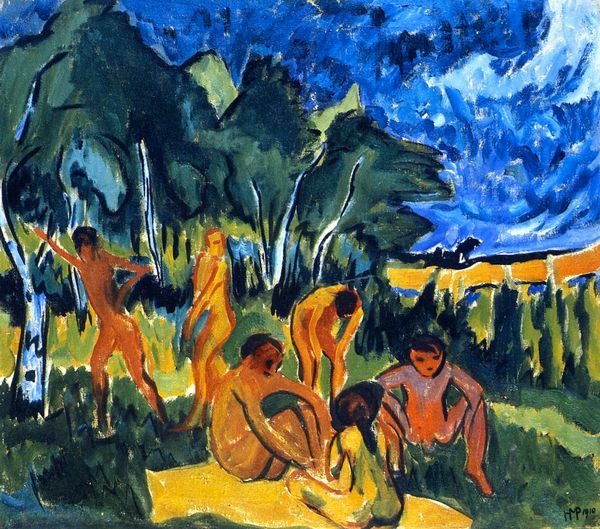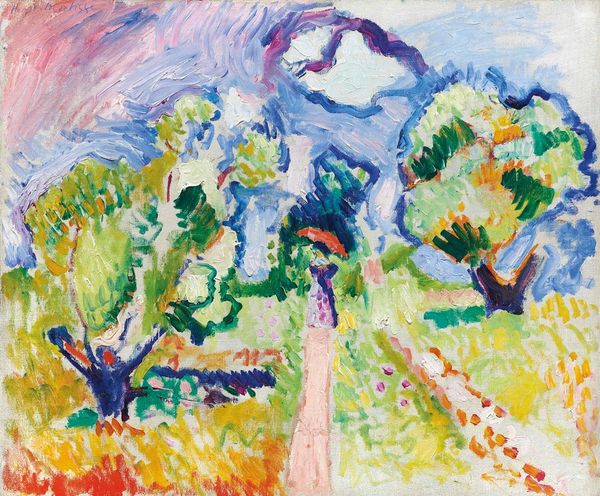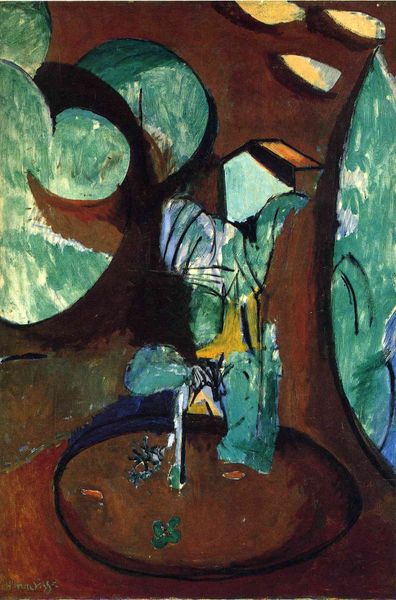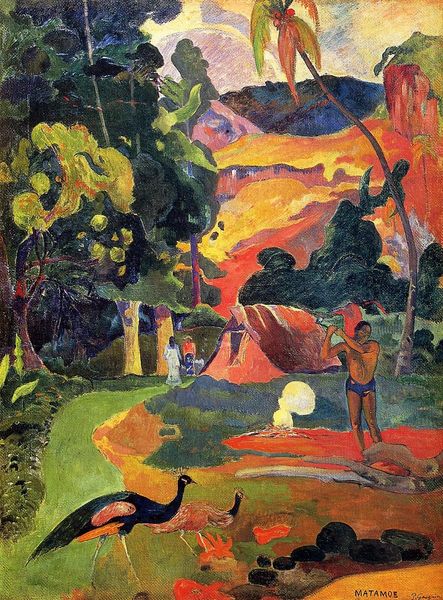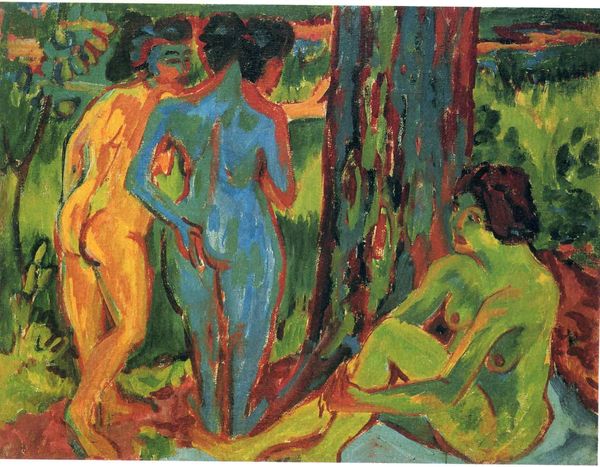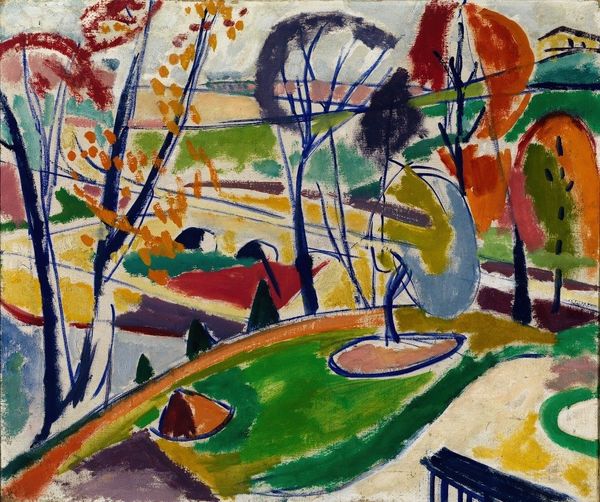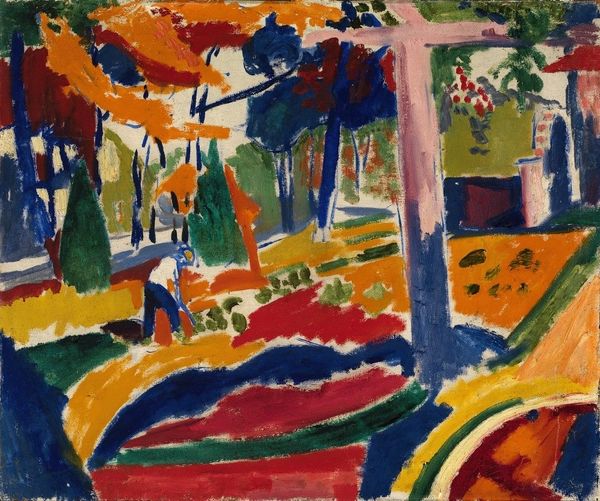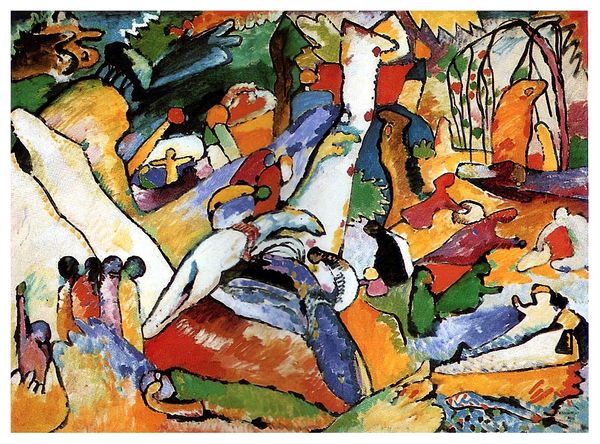
Dimensions: 46 x 55 cm
Copyright: Public domain US
Curator: Here we have Henri Matisse’s “Pastoral,” painted in 1905. Look at those colors! Editor: My immediate reaction is unease. There's something about the flattened perspective and jarring color choices that disturbs what should be a peaceful scene. It's definitely not the ideal "pastoral" one might expect. Curator: The power comes from the arrangement of shapes, the intense juxtapositions of pure color. Notice the arbitrary use of hues to describe form. A red tree trunk, lavender shadows, these are chosen for their optical intensity rather than realism. This is what captivated audiences when it was made. Editor: Agreed, the colour choices are bold, however, looking through an intersectional lens, it appears to me that the seemingly innocuous portrayal of nudes risks romanticizing colonial encounters and an unsettling disregard for bodily autonomy and race. Curator: I see your point. However, let's focus for a moment on the interplay between the foreground figures and the background landscape. There is very little distinction made between them. This enhances the unity of the picture. Editor: And perhaps perpetuates the act of disregarding marginalized voices. Can the emphasis on form truly be separate from these underlying contextual meanings? This work seems so intent on challenging conventional norms and, therefore, invites critique of the norms that it perhaps perpetuates unknowingly. Curator: The radical simplification of form leads the viewer to truly contemplate their role as active creator of meaning. Ultimately the composition offers a certain kind of pictorial pleasure. The colours vibrate and resonate. Editor: Perhaps. Yet those colour choices also perpetuate stereotypes of a white fantasy devoid of true equity. Despite its surface appeal, I see discomfort, imbalance. A constant renegotiation of not only form, but subjectivities and history, is key. Curator: Yes, well it seems we can both agree that Matisse's choices provoke response. Editor: Indeed. Art at its most poignant serves not only as a testament of formal construction but an intersectional space of dialogues between medium, material, memory, and action.
Comments
No comments
Be the first to comment and join the conversation on the ultimate creative platform.
